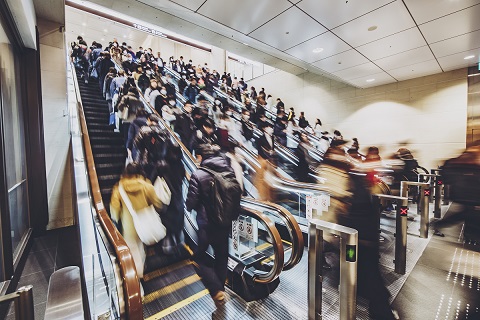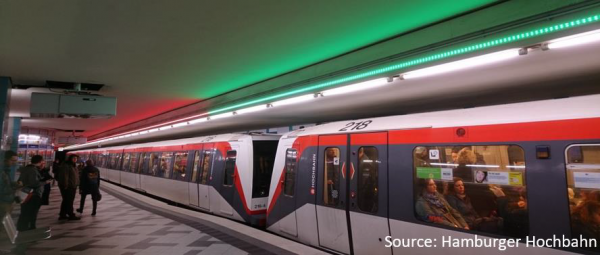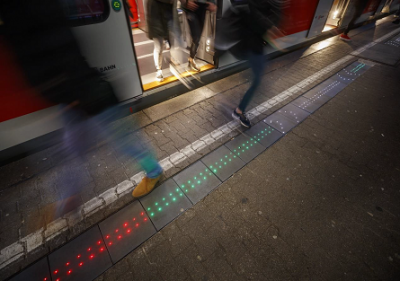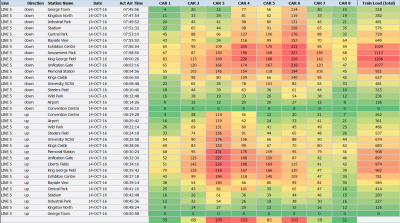
Cities, SI Urban 2/2020
Channelling passengers properly
Who is not familiar with the scenario? You decide to use public transport and there are dense crowds of people even at the departure terminal of the tram, train, metro etc. When the desired means of transport then finally arrives, all the passengers surge to the same entrance at once, such that the journey in the overcrowded carriage is uncomfortable even for those who have managed to grab a seat and the overcrowding makes it difficult to alight at the desired stop.
As a solution, socalled crowd management tools are now offered. Owing to the pandemic, these provisions are more current than ever, as the software solutions ensure more space in stations and are therefore also suitable as social distancing tools.

Traffic light system: The red and green LED lights above thecompartments clearly indicate which carriages still have space available and which are already full.
Distribution
Many studies have already been conducted into the occupancy of carriages on public transport and it is apparent here that the transport capacity is rarely reached or indeed exceeded. Naturally, the perception is very different, as most passengers stay in the same sections. No mode of transport is protected from this distribution.
To improve comfort significantly, the problem of overcrowding can be resolved in various ways.
Within the transport system, an automatic passenger counting system is installed, which calculates the occupancy level and passenger capacity of each section on board the public transport. Immediately on departure, the train transmits the occupancy information to the next stop.
LED lights above the doors or on the platform indicate the actual distribution on the incoming public transport vehicle.
With this information, whilst they are still waiting, passengers can distribute themselves in carriages that are less full. Consequently, it is possible to achieve not only improved comfort during the journey but also quicker departure as a result of faster boarding and alighting.
Photo: DB Regio AG/S-Bahn Stuttgart/Gottfried Stoppel

The actual capacity level and/or expected vehicle load can be transmitted to apps in real time. They can therefore also be used on modes of transport that do not have large station buildings, such as on buses. In an age of multimodal transport, such tools can have a great impact on punctuality and travel comfort.
Even small changes in travel behaviour have noticeable effects, such as in distribution on platforms. (The results: shorter waiting times, fewer people at the station, shorter peak periods).
Owing to their high availability and small gondolas, urban cable cars have to contend with this problem only to a limited extent relative to other transport systems. Yet here too, many gondolas travel with fewer passengers than could actually be transported, which results in an unnecessary increase in waiting times even here. A crowd management system could therefore further increase the transport capacity of the cable-drawn systems. tm
In the graphic you can clearly see that individual cars were overcrowded (red), while others further back or in front were still almost empty (green). A more regular distribution should be achieved through an optimized passenger distribution. Statistics: INIT GmbH/Karlsruhe, MOBILEstatistics








